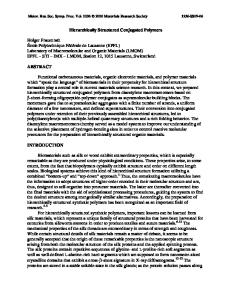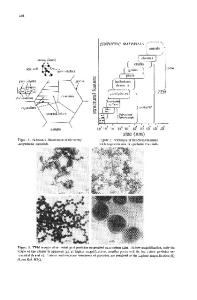Size-controllable Synthesis of Hierarchically Structured Mesoporous Anatase TiO 2 Microspheres Covered With {001} Facet
- PDF / 6,421,941 Bytes
- 6 Pages / 612 x 792 pts (letter) Page_size
- 1 Downloads / 320 Views
Size-controllable Synthesis of Hierarchically Structured Mesoporous Anatase TiO2 Microspheres Covered With {001} Facet Zhao Zhao1,2 Haifeng Zhao1 Guoqiang Zhang1,2 Ligong Zhang1 and Zaicheng Sun1 1
State Key Laboratory of Luminescence and Applications, Changchun Institute of Optics, Fine
Mechanics and Physics, Chinese Academy of Sciences, 3888 East Nanhu Road, Changchun 130033, People’s Republic of China. 2
Graduate University of Chinese Academy of Sciences, Beijing, 100039, People’s Republic of
China. ABSTRACT Synthesis of anatase titanium dioxide (TiO2) with both controllable size and high energy facets is technologically important for its application in photocatalysis, photoelectrochemical cell, and solar cells. Herein, we report a simple and fluorine free hydrothermal method to synthesize hierarchically nanostructured mesoporous anatase TiO2 spheres (MATS) with controllable size, which covered with nearly 100% {001} facet. Mild H2SO4 was used as both a phase-inducer formation of anatase phase and a capping agent to promote oriented growth and formation of {001} facet. PVP acted as morphology control agent to prevent growing larger of the mesoporous anatase TiO2 spheres (MATS) with ~600 nm in size. Detailed XRD and SEM studies suggested that formation of MTAS is a typical nucleation and growth process. The refining or reconstruction of TiO2 crystal structure during growth resulted in mesoporous crystalline framework that exhibits enhanced photocatalytic degradation of rhodamine B. INTRODUCTION Anatase titanium dioxide (TiO2) represents widely used oxide semiconductor for photocatalysts and photoelectrochemical cell, and its performance is significantly relied on by its surface area and the exposed crystal planes [1-4]. Since an important breakthrough in the preparation of anatase TiO2 single crystals with exposed {001} facets was achieved by Lu et al [5,6], various TiO2 nanostructures with high reactive facet are developed through F- compounds as capping group. Despite these successes, highly toxic and corrosive fluorinated compounds have been extensively employed in the synthesis of TiO2 crystals to achieve high-energy facets [7-9]. In order to avoid the use of fluorinated compounds, development of a simple and fluorine free synthesis route to achieve anatase TiO2 crystals with exposed high energy facet is highly desirable [10]. Recently, our group developed a fluorine free hydrothermal route to prepare mesoporous anatase TiO2 microspheres, which expose {001} facet on the surface and compose of nanowires in radial direction [11]. However, the mesoporous spheres with about 3.5 micron result in a relative low surface area. Herein, we successfully further reduce the size of
mesoporous anatase TiO2 microspheres from 3.5 micron to 600 nm using PVP as morphology control agent, and the photocatalytic degradation of rhodamine B in comparison with that of our previous mesoporous anatase TiO2 microspheres is much enhanced. EXPERIMENTAL DETAILS Chemicals and Materials: Tetrabutyl titanate (TBT) (AR grade) and concent
Data Loading...











